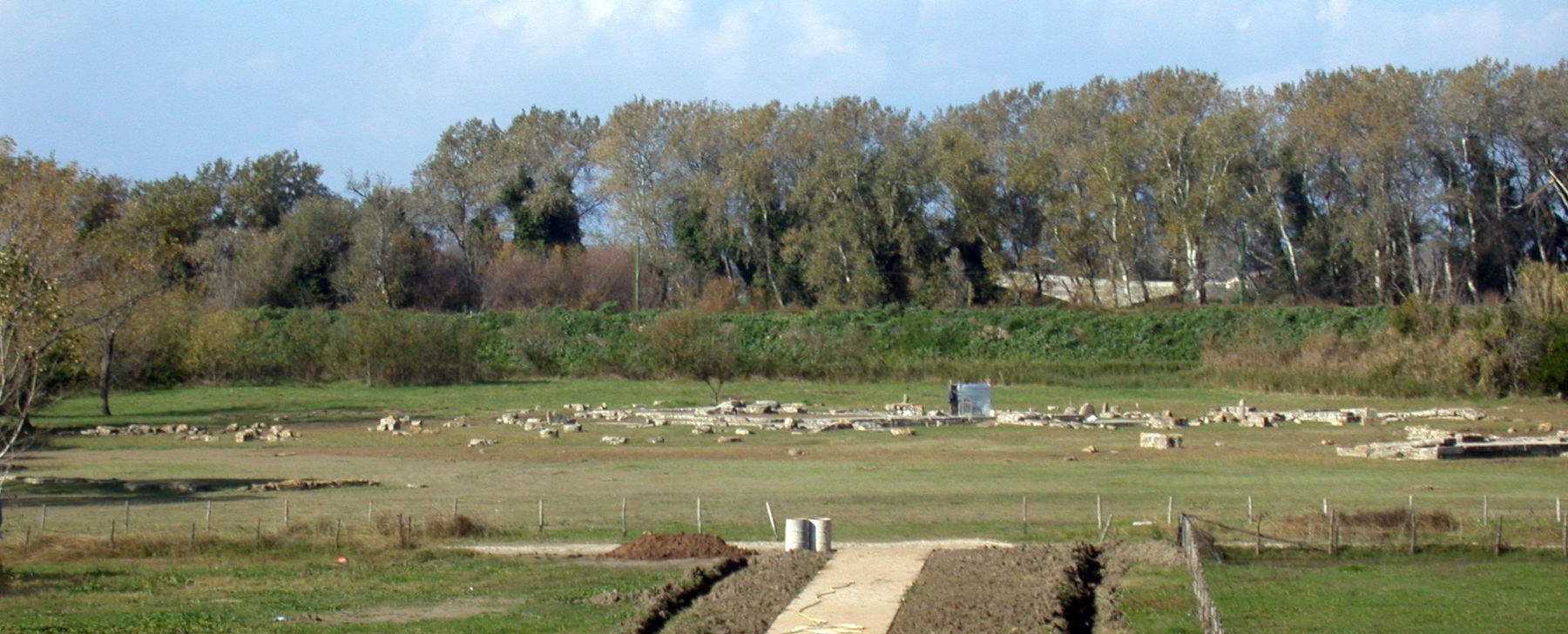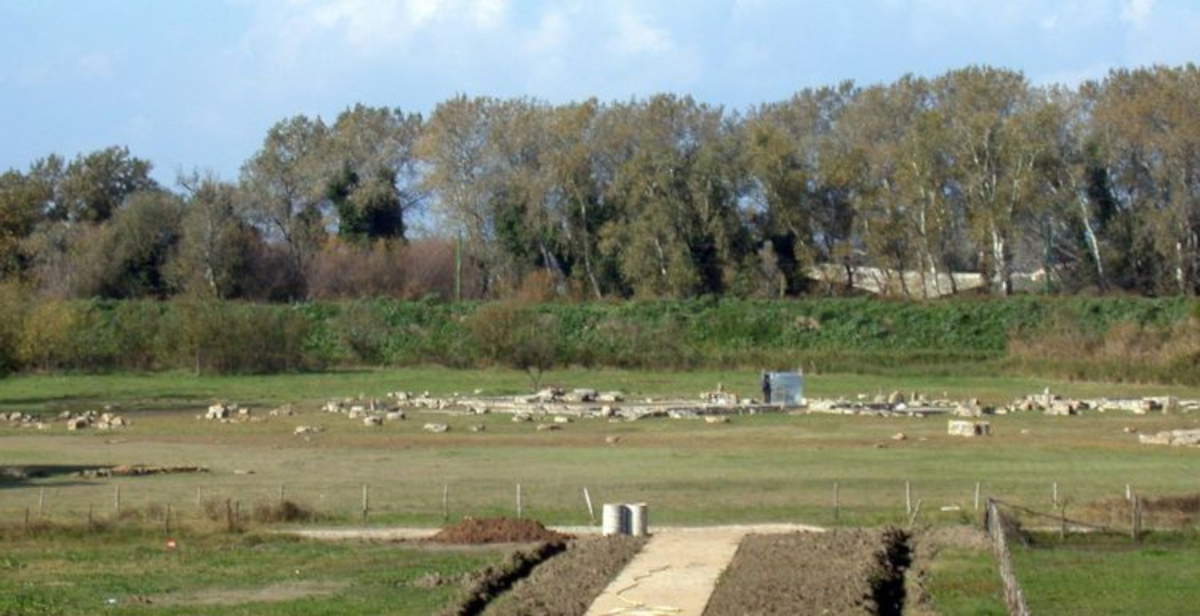After eleven years of closure, one of the most important sites ofancient Poseidonia (present-day Paestum) is finally accessible again. The Sanctuary of Hera Argiva, located at the mouth of the Sele River, had been closed to the public in 2014 following a violent flood. The reopening is made possible thanks to an enhancement project promoted by the Paestum and Velia archaeological parks. The inauguration of the new trail, called The Temple on the Border - Hera and the Landscape of the Sele River, is scheduled for Dec. 4, 2025 at 10:30 a.m. The site represents a point of intersection between myth, history and the coastal landscape. According to tradition, Jason is said to have dedicated a shrine to the goddess of Argos during his return from conquering the Golden Fleece with the Argonauts. In the 6th century BC, Greek settlers built a sanctuary here on the northern edge of their territory, along a natural boundary that separated Poseidonia from Etruscan lands. For centuries, the area served as a religious and cultural landmark, but the inaccessibility of the past eleven years had made its original relationship to the landscape difficult to perceive.
“With this minimal, simple but effective intervention,” says Antonella Manzo, architect of the Archaeological Parks of Paestum and Velia, “we intended to give a first degree of accessibility to the structures still visible on the ground and to allow a contemporary reading of the site in its stratifications, connecting the history of the sanctuary dedicated to Hera and its garden, historically attested, with the later territorial configuration, represented by the masseria and the cultivation activities, as well as by the distinct naturalistic value of the mouth of the Sele River. For us, this first phase represents the start of a process to improve accessibility and the visitor experience: in the future, we plan further integrated interventions to ensure safe access even for people with specific physical and cognitive needs, so that they can fully enjoy a complex archaeological site consisting of the area and the narrative museum.”
“The implementation of the project took place with a focus on environmental sustainability understood as respect for the naturalistic connotation of the site,” stresses Ornella Silvetti, ALES architect working at the Paestum and Velia archaeological parks. “The interventions carried out are low impact, in fact the structures built are low vulnerability and respectful of the quality and integrity of the ecosystems and biodiversity present in the site.”
“The reopening of the Sanctuary of Hera on the Sele River gives back to the territory a foundational place in its history,” says Tiziana D’Angelo, director of the Archaeological Parks of Paestum and Velia. “Myth, landscape and archaeology are once again part of a single narrative, now made more accessible and aware. This intervention represents a decisive step in the Parks’ path of enhancement, which will continue in 2026 with the refurbishment of the Museum dedicated to the goddess and the launch of new excavation campaigns. These are interventions that will further strengthen the knowledge of the sanctuary, offering new elements to understand the evolution of the complex in its original context.”

The new path combines archaeological interventions and landscape design with solutions aimed at accessibility. The structures of the path follow a gradual progression, starting with more rigid lines and pre-existing paths and evolving toward light and flexible geometries through reversible walkways and beats. The paths orient the visitor’s gaze on the main evolutionary phases of the sanctuary, accompanying the observer along the sinuosity of the Sele River bend through paths guided by wooden posts and ropes. The more than 41,000-square-meter area houses a stabilized earthen facilitated path, information panels and tactile maps, new rest areas and a fence system of chestnut poles. The creation of the Garden of Hera, inspired by the Mediterranean essences documented in the ancient sanctuary, features pomegranates, oaks, myrtle, lavender, rosemary and other typical plants, aiming to evoke the historical atmosphere of the place without claiming scientific reconstruction. The paneling is designed to ensure full accessibility, consistent with the communication standards of the archaeological parks of Paestum and Velia, while the shaded rest areas encourage a slower, more meditated enjoyment, in line with the philosophy of the Museo Narrante di Hera Argiva.
Guided tours, curated by Parks-trained Civil Service volunteers, will take place every Saturday at 11 a.m. and Sunday at 3 p.m., with additional appointments on the first Sundays of the month and during the December 8, 2025 holiday. Admission is included in the Parks ticket and Paestum&Velia subscription, with reservations required at pa-paeve.promozione@cultura.gov.it. Visitors should pick up their tickets at the Parks ticket offices before going to the Sanctuary. The initiative is part of an important archaeological research context. In 2023, during campaigns conducted by the University of Naples Federico II under the direction of Professor Bianca Ferrara, three sandstone metopes were recovered between the Late Archaic temple and the southern stoa. Two of them were already known thanks to reports by archaeologist Paola Zancani Montuori.
The slabs, fragmented and in an advanced state of decay, belong to the metopal cycles that decorated the sanctuary between the sixth and fifth centuries B.C., with two examples referable to the cycle of the dancers. The third metope, still partially studied, may derive from a hitherto unattested frieze. The recovery of these elements offers a singular scientific opportunity: the slabs will be subjected to high-precision multispectral, mineralogical and iconographic analyses, useful in elucidating construction techniques and temple decoration. In parallel, the parks have launched a fundraising campaign through the Art Bonus platform, offering tax breaks of up to 65 percent to donors to ensure the preservation and future display of the metopes.
The new route is only the first step in a larger enhancement project. In 2026, the Hera Argiva Narrative Museum will be refurbished, completing a plan that integrates research, preservation, and dissemination into a single cultural vision. The inauguration will be attended by Tiziana D’Angelo, Antonella Manzo, Ornella Silvetti, Maria Boffa, parks archaeology officer, and Bianca Ferrara of the University of Naples Federico II. The return of the Sanctuary of Hera Argiva to public use thus marks an important moment for the understanding of the archaeological landscape and for the preservation of historical evidence of great importance, returning visitors to a comprehensive and integrated reading of the site, between architecture, nature and historical memory.
 |
| Hera Sanctuary on the Sele River reopens with new archaeological trail |
Warning: the translation into English of the original Italian article was created using automatic tools. We undertake to review all articles, but we do not guarantee the total absence of inaccuracies in the translation due to the program. You can find the original by clicking on the ITA button. If you find any mistake,please contact us.